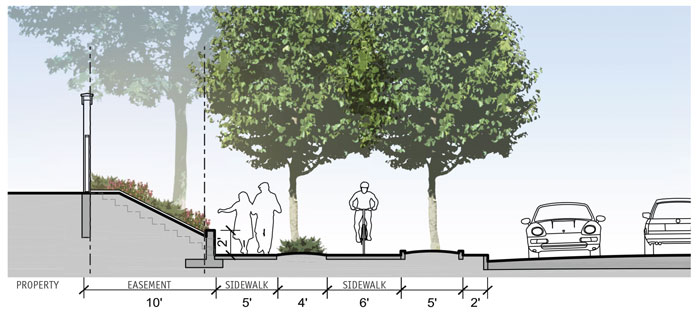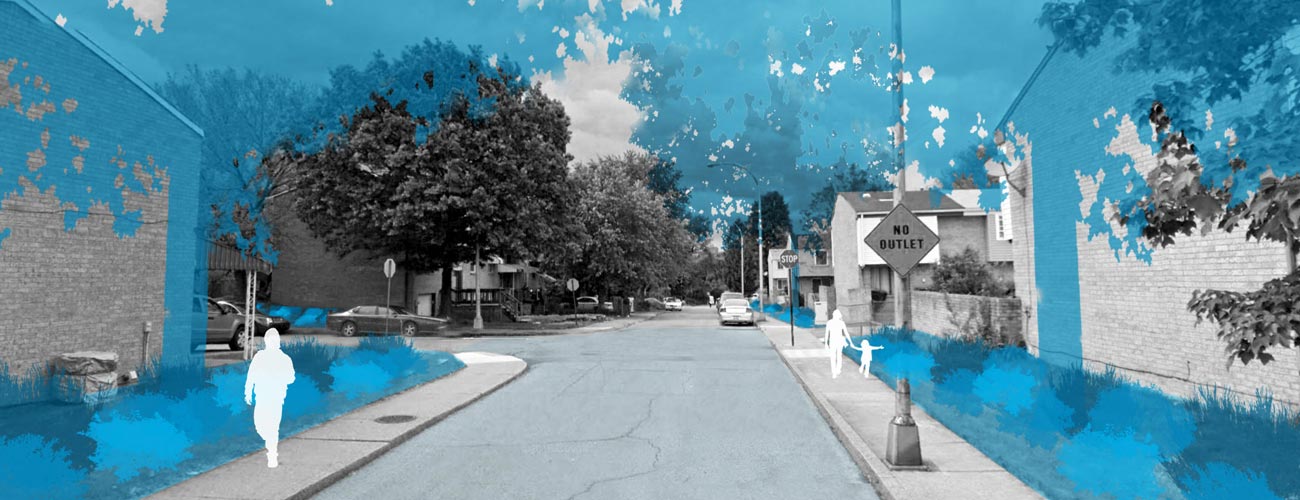Enright Court
Enright Court was developed as an affordable homeownership community in the 1970s. In many ways this was a progressive and innovative idea. It continues to offer the potential for wealth-building for homeowners, but its viability depends on addressing several serious issues, for which evolveEA provided some recommendations.
 The issues Enright Court faces span from being related to the original site planning, which have been addressed in the suggested changes, to the more critical problem of the ability of the property owners to manage the common areas since no proper organization was set up to manage these common spaces for the residents.
The issues Enright Court faces span from being related to the original site planning, which have been addressed in the suggested changes, to the more critical problem of the ability of the property owners to manage the common areas since no proper organization was set up to manage these common spaces for the residents.
evolveEA’s redesign indicates changes in three broad segments – the perimeter, the commons, and the unit+lot.
The perimeter aspect deals with creating a better frontage for Broad St, introducing dense flora and fencing, facilitating pedestrian connections, and providing emergency egress systems.
The second section, the commons, addresses traffic calming, tree planting, better court illumination, improved paving, creating green courts and standardizing wayfinding techniques.
 For the unit+lot, we suggested numerous improvements ranging from front yard parking for the lot, to installing communal PV systems for increased energy efficiency, and ultimately empowering long-time residents in becoming homeowners in Enright Court.
For the unit+lot, we suggested numerous improvements ranging from front yard parking for the lot, to installing communal PV systems for increased energy efficiency, and ultimately empowering long-time residents in becoming homeowners in Enright Court.
ELDI has been working with Enright Court homeowners to identify the problems that have developed and find ways to eliminate deterrents to investment. ELDI has purchased 14 units that were in poor condition in order to renovate and sell them to homeowners. ELDI will also continue working with the homeowners to establish a management organization with the capability of handling the maintenance of common spaces and making improvements that benefit the community.
The assumption here is that two courses of action are followed, as they are essential to most of the recommended improvements. The first is that there would be an organization formed to manage the common areas of the site (easement areas). The second is that the City would agree to take ownership of the private courts, thereby assuming responsibility for maintaining the pavement.



